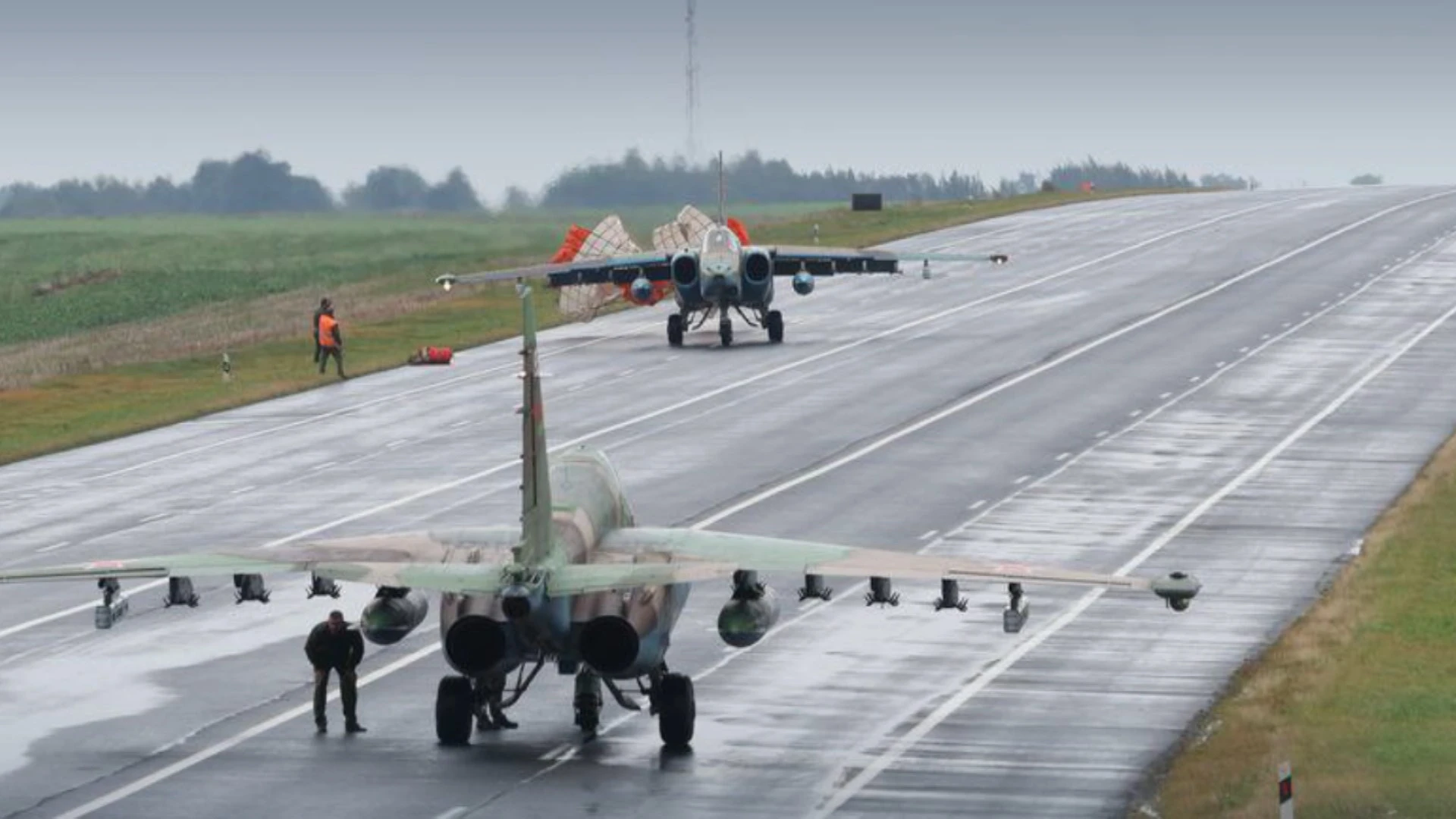3.68 BYN
2.98 BYN
3.42 BYN
Ministry of Defense: Belarusian Military Complete All Assigned Tasks during Zapad-2025 Exercises

Belarusian military personnel completed all assigned tasks during the Zapad-2025 exercises. This was reported by the Belarusian Ministry of Defense Command, summing up the preliminary results. The active phase of the maneuvers has concluded. On September 16, journalists were shown aircraft in action. Near Minsk, military pilots practiced landing on a highway, while other services practiced air cover and operations in special conditions.
Zapad-2025: Landing on a Motorway
Turning a motorway into a safe runway requires the coordinated work of multiple units. The area is cordoned off by military guards, and checkpoints are set up. Air defenses protect the zone from possible attacks. Radio monitoring is maintained and enemy drones are neutralized in case of an attack. Mobile refueling trucks, repair vehicles, and evacuation equipment are quickly deployed. If necessary, temporary hangars, tents for the crew, communications, and command posts are set up.
This is a so-called alternate airfield. Knowing the advantages and weaknesses of aviation, the enemy always seeks to destroy airfields in war. Covering a vast area from the air is impossible, and aircraft are helpless on the ground. Therefore, there are motorway sections where aircraft can land.
Dispersal over a large number of sites
There is a way to preserve combat aircraft during wartime when airfields are destroyed: disperse the aircraft over the largest possible number of sites suitable for takeoff and landing. This section of the highway is one such example. Soviet aviation's experience using road sections began in February 1945, when Pokryshkin's air division carried out combat sorties from German highways. During the Cold War, Warsaw Pact and NATO countries began designating road sections as alternate airfields.
The Su-25 is often called the Grach (rook) because of its characteristic bird-like wing curve. Incidentally, the rook is accustomed to harsh conditions, just like the superplane.
Military vehicles provide direct air support to troops on the front line. Destruction of tanks, infantry fighting vehicles, firing points, enemy manpower and objects in the frontline zone. Iron birds are capable of operating in conditions of strong air defense counteraction. Such tasks require incredible survivability. The designers have laid down a high level of protection: the cabin is made of titanium armor, important control elements, hydraulics and fuel lines are protected and duplicated. The fuel tank filled with porous material prevents explosion and fire when shot through. The engines are located on the sides of the fuselage so that a hit to one does not disable the other.
"The biggest difference is that a standard airfield is equipped with radio navigation aids that help with approach and maneuvering. A roadside airfield lacks these aids. Plus, there are no landmarks you're accustomed to, constantly approaching your airfield. Everything is new here; you have to plan your approach visually. As part of the exercise, we carried out a strike against a simulated enemy, penetrating air defenses at extremely low altitudes, and then, accordingly, concentrated our aircraft along the roadside airfield sections and operational airfields," the pilot explained.
The active phase of the exercises concluded
Generally, the Belarusian military completed all assigned tasks for the Zapad-2025 exercises. The active phase of the maneuvers concluded today. Command has summarized the preliminary results. "The exercises provided a lot of material for reflection and assessment of the nature of modern combat operations, the order of their conduct and improvement of the troops' preparation for current events and the nature of modern warfare. During the exercises, we worked through all the tasks that we set. Among the significant ones are such events as planning and consideration of the use of non-strategic nuclear weapons, assessment and deployment of the Oreshnik mobile missile system. We used unmanned aerial vehicles a lot in various variants of their actions. In addition, we considered a whole range of modern hybrid techniques used in combat operations in populated areas, in wooded swampy terrain, in highly urbanized areas, and so on. Our Russian colleagues shared their combat expertise with us, which allows us to say that our units today receive the most modern, most advanced data, which is automatically introduced into combat reality," said Pavel Muraveiko, Chief of the General Staff - First Deputy Defense Minister of Belarus.
Units return to their permanent bases
Now the units are returning to their permanent bases, and military experts and analysts are beginning a debriefing—analyzing the maneuvers conducted, identifying errors, shortcomings, and weaknesses, technical failures, and human factors. Combat readiness and coordination are being assessed, the speed and coordination of the units and subunits is being verified, reaction times, mission accuracy, communications stability, supply logistics, the performance of new models, whether they should be adopted, and much more are being analyzed. The results of this analysis will allow for adjustments to plans and training, and will also improve the army's combat readiness.















